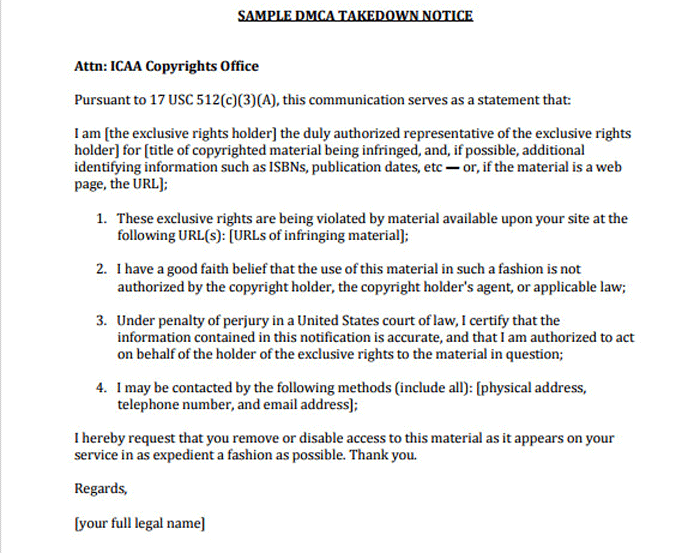
(B) Identification of the material that has been removed or to which access has been disabled and the location at which the material appeared before it was removed or access to it was disabled.(A) A physical or electronic signature of the subscriber.Similar to submitting a takedown, a DMCA counter notice must include the following (17 usc 512 (g)(3)): It is best to consult an attorney directly about the pros and cons of a counter notice, depending on the situation. Sometimes, it may be worth filing a counter notice in order to keep using a host’s services, even if there is no intent to keep the original file that was taken down online. However, the DMCA requires hosts to ban repeat infringers and if a party does not file a counter-notice, a DMCA takedown counts as a strike against the infringer.

It is a legal risk, in a sense, to file a counter notice. The DMCA requires that a party submitting a counter notice is submitting under penalty of perjury – aka, it is a crime to intentionally lie in this sort of a declaration and submitting a counter notice could result in being sued for money damages. It is submitted to the service provider after the DMCA takedown notice has been received and after the purportedly infringing content has been removed.Īfter a counter notice has been received, a service provider must wait 10-14 days before they can reactivate the claimed infringing content.Ĭounter notices are typically submitted when a party feels that their content has mistakenly (or maliciously) been disabled by a DMCA takedown request.


It also provides a safe harbor for hosts and ISPs when users commit infringement on their platforms.Ī DMCA counter notice is the response an organization submits when presented with a valid DMCA takedown notice. The act was written to protect IP owners, content hosts and internet service providers. The Digital Millennium Copyright Act (DMCA) protects technology, devices or services that are copyrighted.


 0 kommentar(er)
0 kommentar(er)
